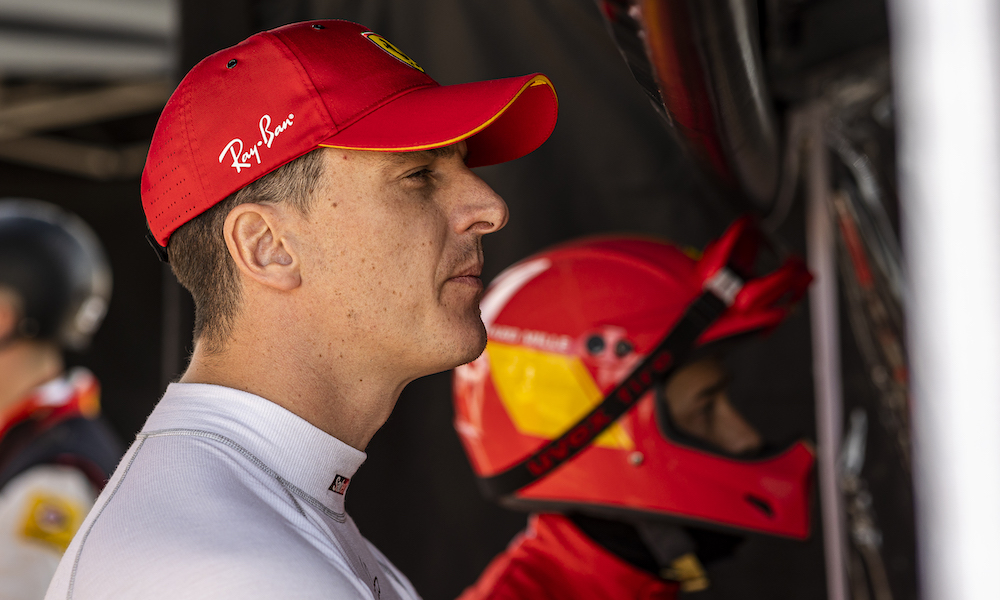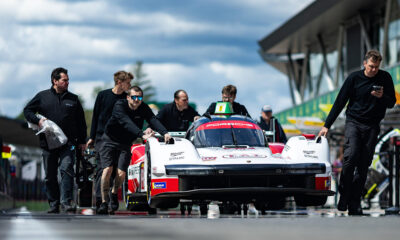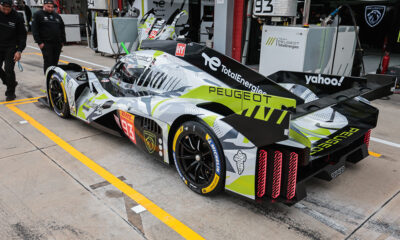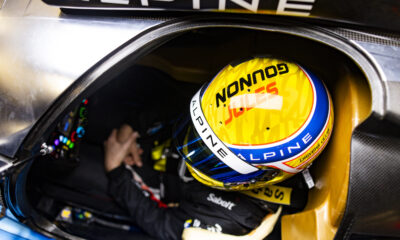Ferrari AF Corse Hypercar driver James Calado has expressed “worry” about how the FIA World Endurance Championship’s tire warmer ban could play out at tracks with lower temperatures than Sebring.
Tire-warming equipment has been banned from all classes in the WEC, European Le Mans Series and Asian Le Mans Series in a measure that is understood to have been made for environmental reasons.
Previously, teams pre-heated their tires in generator-powered ovens to give them more grip at the start of a stint.
Calado, who crashed the No. 51 Ferrari 499P on cold tires in last weekend’s Prologue test at Sebring, was among multiple drivers to suggest that the ban could present issues at the 6 Hours of Spa in April and during the night at the 24 Hours of Le Mans.
When asked if he feels that tire warmers should come back, Calado said: “For me, yes. First of all, I understand the reasons why they’ve done it. That’s absolutely fine.
“But there’s a fine balance between sustainability and our safety and these cars are not easy to drive, they rely on tire temperatures to be able to work properly.
“My worry is that we’ll all go to a place like Spa where in past years it’s been cold. We’ll go out of the pit lane and directly into Eau Rouge. Anything can happen.
“What happened in the Prologue with 20-degree temperature, you can lose the car in a straight line. My worry is that if you spin in Eau Rouge and the car stops, the engine stalls, and you’re side-on in Eau Rouge.
“We’ve seen it in the past of what’s happened. You get nasty accidents. It puts our safety at huge risk.
“Eau Rouge can be a huge impact. It can happen at Le Mans as well, the grip is so low. It’s not about corner speed, we can crash in a straight line [too]. We can’t go full throttle.”
Calado accepted responsibility for his out-lap accident at Sebring’s Turn 1 but highlighted it as an example of what could happen on tires that haven’t been pre-heated.
“It happened here because it was my fault,” he said. “It was driver error of course, but that’s how easy it can happen.
“I wasn’t even pushing and it was totally unexpected, yet it can happen.
“There’s a lot of cars on track and the speed differences, especially with Hypercar, you can hit huge speeds, 300 km/h plus. I just dread to think if the cause was because you’ve wheel-spun in a straight line and there’s a side impact, it was down to that.
“Personally, most of the drivers are on my side I think. I get the reasons why it probably puts on a better show. But these cars are heavy, especially the GTEs and you’ve got amateur drivers.
“I just see that there’s going to be big accidents this year for something that could maybe be dealt with a little bit differently.”
One of Calado’s Hypercar competitors Kevin Estre added that Porsche’s WEC team recently tested without tire warmers and struggled in low temperatures.
The Porsche 963 has already contested the Rolex 24 at Daytona, which did not use tire warmers per a long-established rule in the IMSA WeatherTech SportsCar Championship.
“We had a really bad experience [testing] in Portimao a few days ago,” Estre said.
“It was very cold and it was really… I have to be careful using the word dangerous, but it was really tough. Really difficult.
“Here [at Sebring] is a challenge, but it’s no problem compared to what it can be when it’s cold. [Sebring] is OK, Monza will be fine, but Spa and Le Mans…”
Estre also suggested that using solar power to generate tire ovens could ensure a better mixture of sustainability and driver confidence.
“This would be best,” he said. “If you look at how much surface [area] we have here on the tent or on the hospitality at Le Mans. For sure, you could produce a lot [of power].”
Other Hypercar drivers are taking the ban as part of the endurance racing challenge.
“At the end of the day, we’re professionals,” said Toyota Gazoo Racing’s Kamui Kobayashi.
“Whatever situation, we have to bring the car home. No crashes. In Japan we race without blankets, so for us it’s quite normal.
“When we start in [WEC] without the blanket, it was quite short notice. I’m a bit concerned about Le Mans in the night [where] it could be dangerous. Just on out-laps, it’s such a different speed in corners.”
Porsche’s Frederic Makowiecki added: “I’ve never been disturbed by the fact we have no tire warmers. There are plenty of series which are like that: IMSA or Super GT.
“It always gives an opportunity to make some difference, from drivers and teams. I think it’s a good decision from FIA and ACO.”
New Rule Could “Decide the Season” in GTE-Am
The series-wide nature of the tire warmer ban means that all drivers – from Hypercar factory aces to Bronze-rated non-professionals – need to adapt to starting their stints on cold rubber.
Paul Dalla Lana, who races the NorthWest AMR Aston Martin Vantage GTE, indicated that the rule could make or break the championship in GTE-Am where a Bronze-rated driver is mandatory in each lineup.
“This tire thing will decide the season, I think,” Dalla Lana told Sportscar365.
“Any cold event, like Le Mans at night or Spa in the snow, it’s going to be really tough.
“There are a lot of good [Bronze] drivers [in GTE-Am]. I think it’s a difference-maker.
“It will definitely play a role, for sure at Le Mans. I don’t know about rain or how those tires are going to come in. If you flat spot a tire early in the stint, it’s a long day.”
John Dagys contributed to this report























